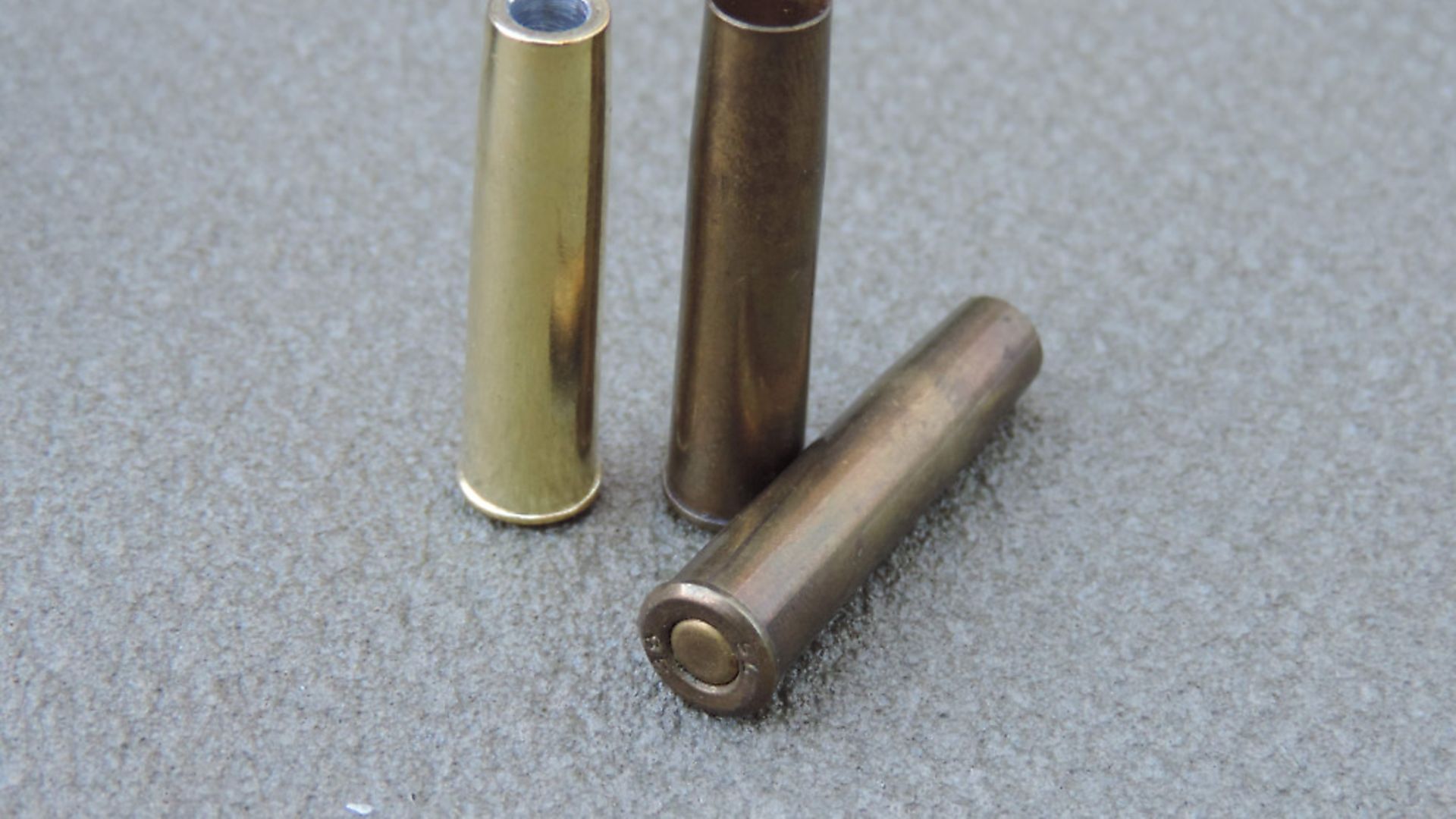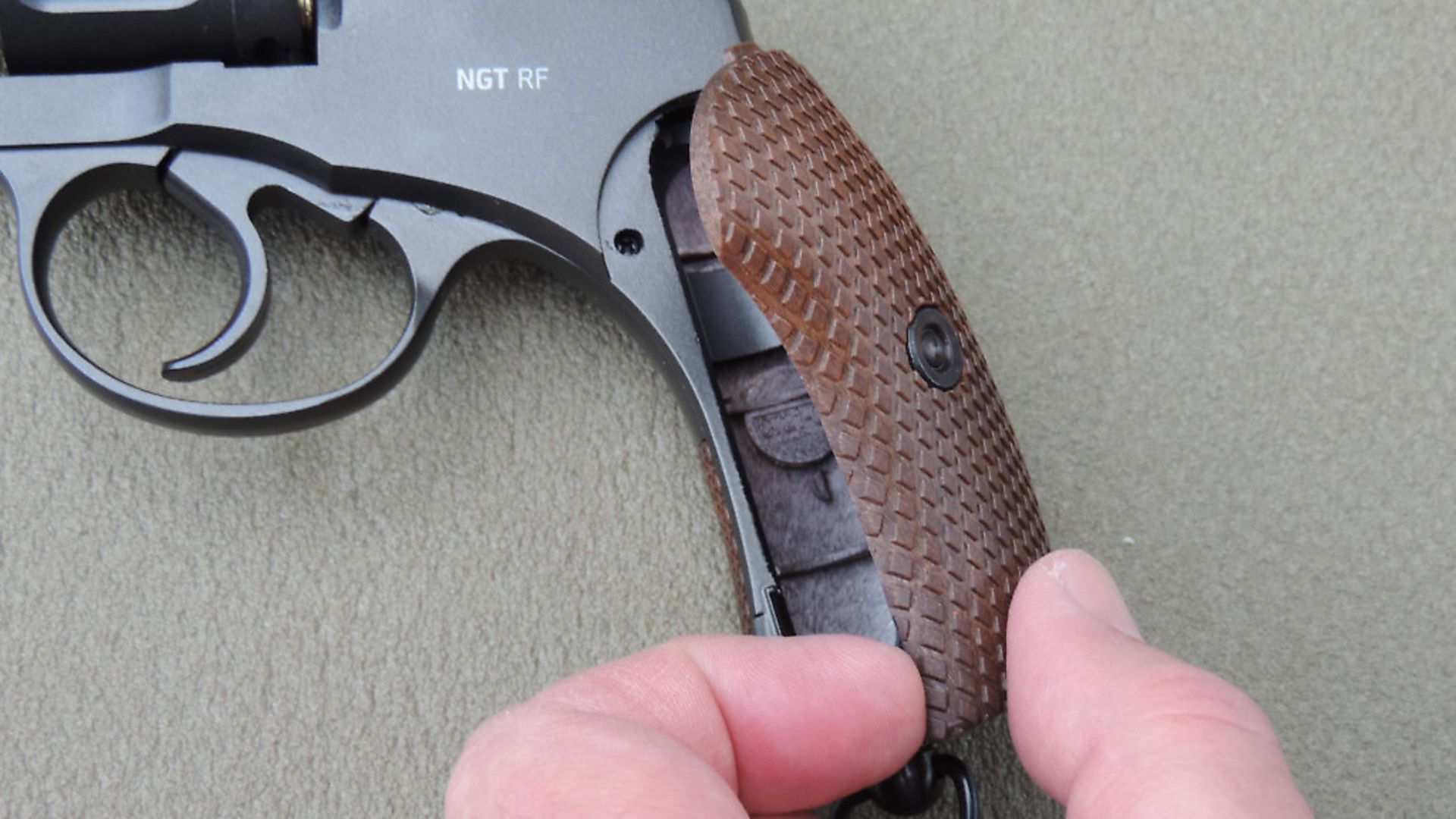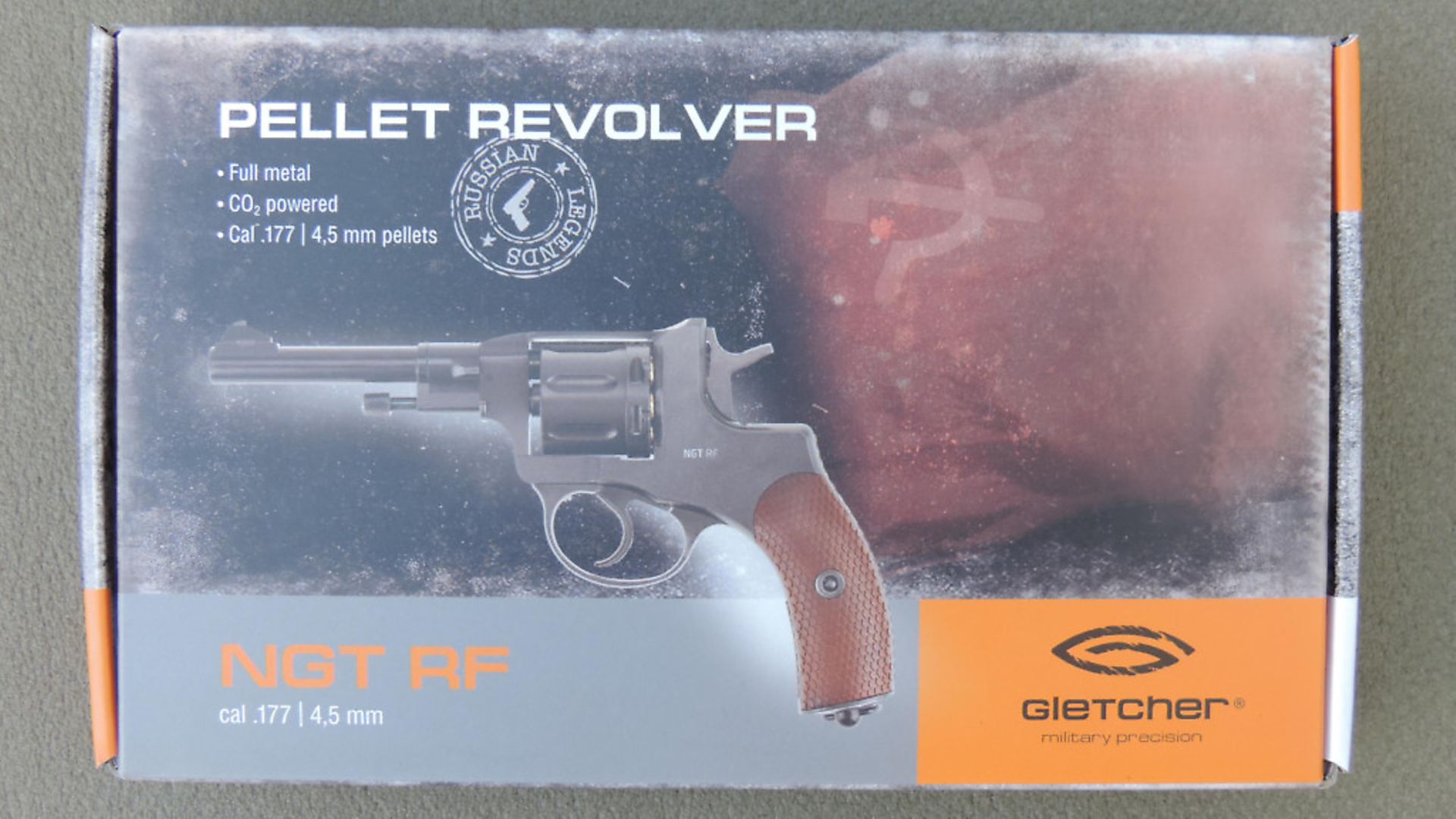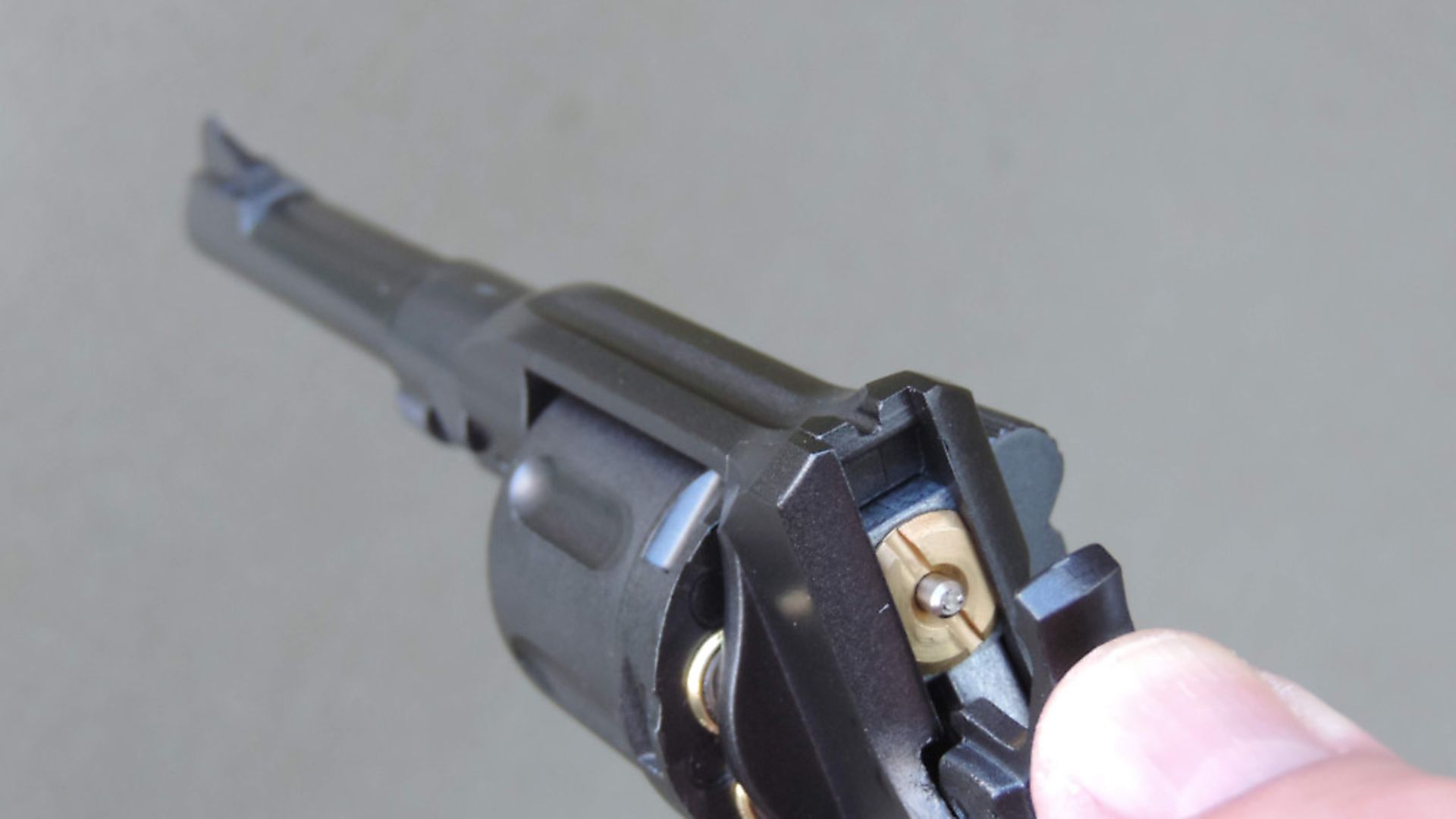John Milewski gets mildly excited about Gletcher’s version of the Nagant 1895 revolver
 credit: Archant
credit: Archant
It may seem a little strange for Gletcher to offer a CO2 replica of a relatively obscure, Victorian-era revolver and Gletcher justify their reasons for doing so by explaining that the Nagant saw widespread service in both World Wars with Russian and then Soviet forces. So, whilst relatively uncommon in the West, the 1895 Nagant is considered a Soviet classic.
BELGIAN ORIGINS
The revolver originated in Belgium and was designed by Leon Nagant, one of the co-designers of the Mosin Nagant rifle, which was the primary service arm of the Russian and Soviet forces throughout both World Wars. Whilst it might look antiquated to modern eyes, it has a couple of unique features that arguably made the Nagant state of the art over a century ago.
 credit: Archant
credit: Archant
Firstly, if you look at the cartridge intended for the firearm, it soon becomes apparent that the bullet is completely enclosed within and does not protrude in the conventional manner. This was intentional because the Nagant’s design included a gas seal that minimised leakage between the front of the cylinder and barrel when the pistol was discharged, thereby reducing the amount of power that is lost when a conventional revolver is fired. The Gletcher’s cartridges resemble originals admirably and when compared to originals, only their ‘new’ shiny finish gives them away.
The gas seal of the original Nagant meant that a suppressor could be successfully used on the revolver, which was certainly not the case with just about every other revolver I can think of. In reality, muzzle velocity did increase, but by a relatively small amount and as unique cartridge cases had to be used, the principle was not used on rival designs. The Nagant also offered seven shots, which was one or two extra when compared with other designs.
THE REPLICA
 credit: Archant
credit: Archant
Gletcher call their CO2 Nagant the ‘NGT’ and there are several variations to choose from. The revolvers were originally offered in smoothbore BB/ball calibre only and were made in a grey/blue finish or silver. I must admit I like the silver finish because it looks antique rather than an unrealistic shiny, blingy colour. Then came the NGT-R, which was a rifled pellet-firing version, and finally the NGT-RF, which is rifled and fitted with a non-original but relatively unobtrusive safety catch, undoubtedly for the U.S. market. Both the R and RF variants were made with the blued or silver finish.
The ubiquitous 12g CO2 cartridge is housed in the grip and the lanyard ring is used to pierce the cartridge, negating the need for a separate tool. Loading is painfully slow when compared with more modern designs, but will be familiar to Umarex Colt Single-action Army owners. This is because a loading gate is incorporated on the right side of the frame, and is moved out and down in order to load/unload cartridges singly. Pellets are loaded into the recessed rear seal of pellet-firing variants and into the tip of cartridges intended for BB/ball.
RANGE TIME
 credit: Archant
credit: Archant
I tested the NGT-RF with .177 Excite flatheads, and muzzle velocity averaged 357 fps with a high of 375 over a five-shot string. Shots landed several inches high at six yards and the thin fore sight was hard to see. It was not possible to lower the tip of the fore sight within the rear sight groove due to the sight’s narrow width, but someone with sharper eyes might be able to do so consistently. I couldn’t. The double-action trigger pull was heavy at the start, as the cylinder revolved and came in at 8.5lbs. The single-action pull was a lot lighter at an average 3.5 lbs and a crisp release with no creep.
I was pleased with the above average velocity and resultant muzzle energy when compared to BB-firing CO2 pistols, but did have to aim off by five inches in order to hit the intended mark at six yards. Power dropped after 60 or so shots had been fired, and so did the point of impact. I was able to fire off over 80 shots before power dropped to the extent that further shooting was impractical.
FIELD STRIPPABLE
 credit: Archant
credit: Archant
As with many Gletcher products, the NGT models are fully field-strippable and the instructions explain how this procedure can be carried out. Simply unload the cylinder, turn the knurled head of the ejector rod clockwise and move it forward when it unlocks. When it is extended fully, the rod and its housing may be moved anticlockwise to a limited extent. On the cartridge-firing Nagant, stuck cases can be removed at this point by forcing them out with the ejector rod – hence its name. Then remove the cylinder axis pin behind the rod housing and the cylinder may be removed from the frame just like the original. Reverse to reassemble.
The Nagant saw service in the 1904 Russo-Japanese war, both World Wars and many other smaller scale conflicts. It was considered as a classic by the Soviet Red Army and with its unique features, the NGT deserves a closer look. Ever the collector, the antique look also appeals to me in a big way, alongside the realism. ?
 credit: Archant
credit: Archant
 credit: Archant
credit: Archant